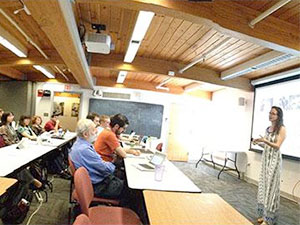Research Thrust: Social Intelligence
 Social intelligence is a core element of human intelligence. These lectures introduce many of the experimental methods used to study the development of social cognition and provide an overview of aspects of our current understanding of the development of social intelligence in infants and young children, such as their ability to recognize faces and their social categories, reason about social interactions, and infer the mental states of others.
Social intelligence is a core element of human intelligence. These lectures introduce many of the experimental methods used to study the development of social cognition and provide an overview of aspects of our current understanding of the development of social intelligence in infants and young children, such as their ability to recognize faces and their social categories, reason about social interactions, and infer the mental states of others.
